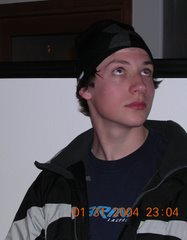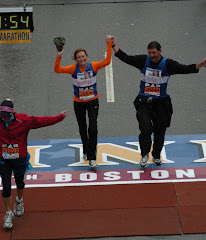Or maybe I should say the Man in his Man Cave. From jetting around the US to a self-contained
bedroom/bathroom, my world has gotten pretty small pretty fast. But in the context of what I’m going through
it truly doesn’t matter.
This week’s blog starts with the
first phase of treatment called Induction. The
first phase of Induction is the
actual chemo therapy treatment. As I
mentioned last time, the goal of the chemo is kill off all the white blood
cells that have gone rogue. In my case
it’s the neutrophils, the little guys that protect the body from infection. To do this they put me on two chemicals
that target those cells in what they call a ‘7 and 3 treatment’. For 7 days you are on one of the drugs for 24
hours a day while the other one is pushed through your IV once a day for the
first 3 days.
Speaking of IVs, the Friday the chemo was started (the day
after the bone marrow biopsy), they do a small operation to put in a PICC line. Way cool.
They use ultrasound to locate a vein in your upper arm then they make a
small incision and thread a plastic tube into the vein, up your arm and into
your chest. The arm end is held in a
snap mechanism that they can then attach the IV tubes to (I have two dangling
from mine). Given the amount of times I
was stuck to give blood or receive fluids up to this point, this makes life so
much easier. Kind of like having and
outside faucet vs having a plumber come to your house every time you need to
use a garden hose.
PICC line is in, the prep drugs are being pumped in and by
the evening Friday they hooked me up to the chemo drugs. Lots of questions at this point…If the
chemo is only on for 7 days, why am I in the hospital 30+? When will I start feeling bad? What are some of thing that will happen to
my body as a result of the chemo?
The reason for the long hospital stay is to assure your body
has recovered enough for you to leave isolation and face the germs of the real
world. You are not cured after Induction, but treatment from there will
depend on your type of AML (which you will likely know sometime between day 7
and day 10 after the bone marrow biopsy cytogenetics are complete). The measure for going home in my case will
be the rate I am able to create good neutrophil white blood cells and
platelets. It would not be good form to
get all the way through Induction and
then succumb to the common cold or a cut while shaving when you get home.
I asked the question of when I will start feeling bad and when will I start feeling better a
half a dozen times but I kept getting the same answer…You start feeling bad
around the end of chemo (day 7) and It will get worst through about day 18body . You should turn the corner and start feeling
better by day 21. However, every patient
is different and your mileage may vary.
The last 9-10 days of the 30 are to allow your system to recover to the
point of producing enough blood cells to protect you. Oh Yeah…and they have a nice going away
present for you just before you leave the hospital….another bone marrow biopsy.
Here are some of the challenges and body changes you can
expect as a result of the
-
Mouth sores
-
Rashes (reactions to the meds)
-
Water weight gain…swelling
-
Nausea and Vomiting
-
Loss of hair
-
Constipation followed by bouts of diarrhea
-
Excessive Nose bleeds
-
Extreme Fatigue
-
Change in sense of taste
-
Reactions to transfusions
Most of the items on the list come and go at random times,
usually just when you are starting to feel better. Mouth sores, rashes, nausea, and hair loss however
come and stay like a bad house guest.
Some of these will start during the chemo phase but most come
after when you are in the “Dead Zone”.
The dead zone is my name for the 2 weeks after the chemo when your body
continues to kill off the bad cells and the system hasn’t “rebooted” to start
generating new good cells. This is also
the time when there is the greatest chance of run-away infection and nonstop
bleeding.
For me, the first few days of chemo were uneventful. You are on a cocktail of anti-viral,
anti-fungal and anti-biotics while they wait to see how you are going to react
to the drugs and the chemo. My biggest
problem is a couple of cyst like sores that formed on my back near the biopsy
site that have swollen up into what
looks like little purple volcano’s surrounded by a bigger circle of red
inflamed area. Pretty uncomfortable when
trying to lie in bed or sleep on my back.
My back/backside has become a curiosity for a variety of doctors and is
getting more views than a new baby Panda at the National Zoo. So
far it has stumped the Oncology and Hematology DRs, the Infectious disease DRs,
and the Wounds Dr. (I didn’t even know they had such a specialty). Over the course of the week it continues to
get worst.
By day 4 of the chemo I’m feeling the effects. My weight has climbed 17 lbs, my appetite is
pretty much gone and a mild stomach problem that I had before (Gastroparesis)
has taken over the digestive system and I burp regularly as soon as I put
anything in my stomach (100-150 times in
10 minutes). The nurses have taken to
looking for a bull frog under my bed.
We’ve now added Gastrointestinal DRs to the long list of daily
visitors.
Days 5-7 are more of the same. As my system becomes less and less able to
protect itself, we substitute drug cocktails.
It’s a combination of trying to find the right antibiotics to deal with
the back, the right anti-viral and
anti-fungal drugs to fight off any potential external infectors as well as drugs that can help the stomach and digestive
system so you can keep the energy up and the fluids (and other stuff) flowing
through the system. Everything gets
measured…what I call the “Goes-intas” and the “Goes-outas. Privacy (or the lack there of) takes on a
whole new meaning.
As you might expect, the body doesn’t take to kindly to
being flooded with poison and then a variety of compensation drugs and this is
where the symptoms mentioned above begin to appear. I broke out in a rash, first on my neck and
head and then spreading to my feet.
More adjustments to the drugs and some creams to help with the
rash. The “volcano cysts” on my back are
getting worst, more drugs for that. A lot of the drugs are administered as liquid
IV so my fluid retention has gone up.
Weight is up over 22lbs from when I walked in the door a week earlier so
there is also a drug to help me flush fluid from my system. By the way, that last drug is called Lasix,
pronounced the same as the corrective eye surgery. When they first told me I was getting a Lasix
treatment I marveled at what a full service operation they had where they would
fix my eyes as well as my blood.
As chemo winds to a close (day 7 of 30+) I’m still in good
spirits, still getting in 60-80 minutes of walking a day, and only dealing with 4 or so of the dozen
potential unpleasant symptoms. Of the 4
jobs I have…Eat, Drink, Sleep, and Walk…..eating and sleeping are the ones that
need some work. Walking presents some
interesting challenges as I have to maneuver Olive Oil around a hallway full of
portable computer stations, nurses, techs and other patients. Keeps things exciting,
If you have questions feel free to post them on the blog
site and I will try to incorporate the answers into future blogs.
Next time we will take on week one of the Dead Zone.




